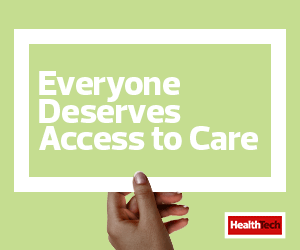What Is Public Health and How Does It Help Patients?
“Public health is managing or overseeing the health of a given defined geographical region,” Moore explains. “You have public health departments for towns and communities, cities, counties, states and then nations, so it slowly scales up.”
The dominant focus of public health is on prevention, which is a distinction from population health. In addition, public health systems are more siloed from hospital systems, which share electronic health records (EHRs). Physicians rarely interact with public health systems except when they need to report diseases like tuberculosis or sexually transmitted diseases, Hu says.
Hu also explains that public health is more focused than population health on laws, policies and governance. The government guidance that the Centers for Disease Control and Prevention or state governments issue regarding COVID-19 vaccine and mask mandates are an example of public health and a focus on a larger societal context, he says.
Public health agencies use detailed population data to track the health of a population. They employ electronic reporting to boost the timeliness and accuracy of data required to spot disease outbreaks and monitor these diseases over time. This data helps public health agencies manage widespread disease outbreaks such as COVID-19.
EXPLORE: Learn how AI helps healthcare organizations reduce avoidable patient harm.
EHRs and EMRs Store Data for Patient Populations
Both population health and public health are heavily dependent on EHRs and electronic medical records (EMRs). EHRs are health records that are shareable between healthcare systems, while EMRs are specific to patients in a particular health system, Hu says.
To make EHRs more relevant to public health as well as population health, Hu would like to see the types of data broadened to incorporate data that provides a larger social context. That would include, for example, geospatial data, information about air pollution exposure and data on the risk of living in a high poverty area or food desert (a location that provides poor access to food supply, such as fruits and vegetables).
“These are all part of the understanding of the broader context of health that I think deserves to be in the EMR or EHR and that are much more responsive to the population and public health agenda,” Hu says.
Moore notes the value of EHRs in tracking outbreaks such as the flu in a community. “In the public health context, they’re dependent on EHRs to know what’s going on in the community,” he says.
Health Monitoring Improves Population and Public Health
Wearable devices, which monitor health markers such as lung function, blood oxygen level and blood sugar (to track conditions like diabetes), can fit into both population and public health, according to Hu.
“I don’t think there’s really a distinction between the two,” he explains. “Both generate data that allows us to better understand what’s happening with individuals and what might be the difference between individuals and populations in terms of their response to environmental stressors.”
RELATED: Learn how to integrate remote patient monitoring data to improve health outcomes.
Wearables will not fit into the public policy aspect of public health, according to Hu, who notes that public health scientists sometimes use the devices as part of research to gauge people’s reactions to external stimuli by measuring parameters such as blood pressure, pulse and diaphoresis (sweating).
“In my view it’s really just for the benefit of researchers as well as individuals who want to monitor their own health. That’s really the purpose of wearable technology,” Hu says. “We do not see the use of wearable technology to generate data for policy implementation as being an appropriate use of technology.”
Moore notes that it’s “early days” as far as using data from wearables to monitor disease.
Using Patient Portals for Population Health
More healthcare organizations are offering access to patient portals to allow patients to pay bills, access lab results and schedule appointments. The portals fit more into population health, Hu notes.
“It’s more population health because you’re not going to get patients accessing patient portals unless it’s through their own health provider or their own health system,” Hu says.













